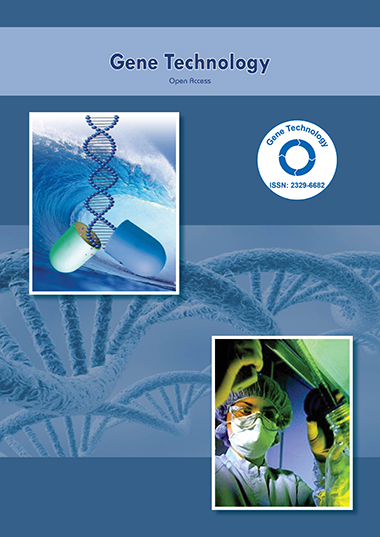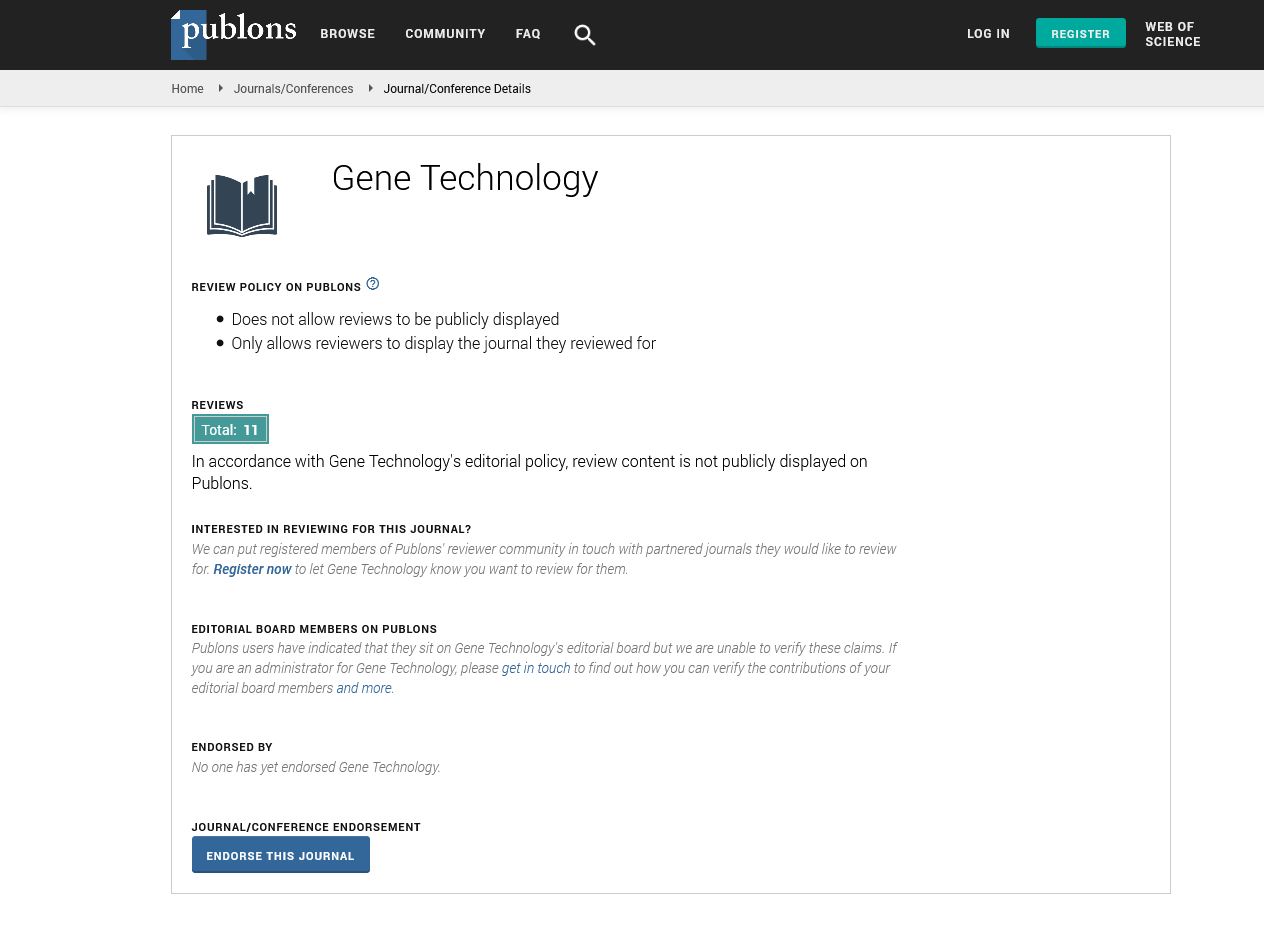Indexed In
- Academic Keys
- ResearchBible
- CiteFactor
- Access to Global Online Research in Agriculture (AGORA)
- RefSeek
- Hamdard University
- EBSCO A-Z
- OCLC- WorldCat
- Publons
- Euro Pub
- Google Scholar
Useful Links
Share This Page
Journal Flyer

Open Access Journals
- Agri and Aquaculture
- Biochemistry
- Bioinformatics & Systems Biology
- Business & Management
- Chemistry
- Clinical Sciences
- Engineering
- Food & Nutrition
- General Science
- Genetics & Molecular Biology
- Immunology & Microbiology
- Medical Sciences
- Neuroscience & Psychology
- Nursing & Health Care
- Pharmaceutical Sciences
Opinion Article - (2024) Volume 13, Issue 2
Advances in Clinical Cytogenetics: From Karyotyping to Genomic Arrays
Yvonne Anke*Received: 03-Jun-2024, Manuscript No. RDT-24-26181; Editor assigned: 06-Jun-2024, Pre QC No. RDT-24-26181 (PQ); Reviewed: 20-Jun-2024, QC No. RDT-24-26181; Revised: 27-Jun-2024, Manuscript No. RDT-24-26181 (R); Published: 04-Jul-2024, DOI: 10.35248/2329-6682.24.13.283
Description
Clinical cytogenetics the study of chromosomal variations and abnormalities in a clinical setting, has witnessed significant advances. From the traditional karyotyping techniques to the modern genomic arrays, these advancements have revolutionized our understanding and diagnosis of genetic disorders. This method involves staining and arranging chromosomes in a standardized format, typically during metaphase, to identify structural and numerical abnormalities. Karyotyping has been instrumental in diagnosing several genetic disorders, such as Down syndrome (trisomy 21), Turner syndrome (45,X), and Klinefelter syndrome (47,XXY). The technique's ability to detect large chromosomal rearrangements, such as translocations, deletions, duplications, and inversions, has made it a cornerstone of genetic testing. However, karyotyping has limitations. It requires actively dividing cells, which can be challenging to obtain, and it has a relatively low resolution, detecting only large chromosomal changes. These limitations paved the way for more advanced techniques in cytogenetics.
Fluorescence in Situ Hybridization (FISH) emerged as a powerful technique to address some of karyotyping’s limitations. FISH uses fluorescent probes that bind to specific DNA sequences on chromosomes, allowing for the visualization of genetic material under a fluorescence microscope. This method can detect specific chromosomal abnormalities, including microdeletions, microduplications, and gene fusions, with higher resolution than karyotyping. FISH has been particularly useful in cancer genetics, where it helps identify chromosomal translocations and gene amplifications associated with various malignancies. For instance, the detection of the Philadelphia chromosome, a translocation between chromosomes 9 and 22, is important for diagnosing Chronic Myeloid Leukemia (CML) and guiding targeted therapy with tyrosine kinase inhibitors. Despite its higher resolution, FISH is limited by the need for prior knowledge of the specific chromosomal region or gene of interest, as it cannot scan the entire genome for unknown abnormalities. This limitation led to the development of more comprehensive genomic techniques.
Comparative Genomic Hybridization (CGH) is allows for a genome-wide assessment of chromosomal gains and losses. This technique involves comparing the DNA of a test sample to a reference sample, using fluorescent labels to detect imbalances. CGH can identify Copy Number Variations (CNVs) across the entire genome, providing a broader view of chromosomal abnormalities. Array CGH (aCGH), a refinement of CGH, utilizes microarrays containing thousands of DNA probes to detect CNVs with even greater precision. This high-resolution method can identify submicroscopic deletions and duplications that are undetectable by karyotyping or FISH. Array CGH has become a standard tool in clinical cytogenetics, especially for diagnosing developmental disorders, intellectual disabilities, and congenital anomalies.
Single Nucleotide Polymorphism (SNP) arrays, developed to enhance the resolution of genomic analysis. SNP arrays examine variations at single nucleotide positions across the genome, providing detailed information about genetic diversity and disease associations. By combining SNP data with array CGH, researchers can obtain comprehensive insights into CNVs and regions of homozygosity, which may indicate uniparental disomy or consanguinity. SNP arrays have been instrumental in identifying genetic factors underlying complex diseases, such as autism spectrum disorders and schizophrenia. They also play a important role in prenatal diagnostics, where they can detect chromosomal abnormalities and genetic disorders with high sensitivity and specificity.
Next-Generation Sequencing (NGS) represents the highpoint of genomic technologies, offering unprecedented resolution and throughput. NGS can sequence entire genomes, exomes, or targeted regions, allowing for the detection of point mutations, small insertions and deletions, CNVs, and structural rearrangements in a single assay. In clinical cytogenetics, NGS has transformed the diagnosis of genetic disorders by enabling comprehensive genomic analysis. Whole-Genome Sequencing (WGS) and Whole-Exome Sequencing (WES) are now used to identify genetic causes of rare diseases, uncover novel disease genes, and guide personalized medicine approaches. NGS-based techniques, such as mate-pair is sequencing and paired-end mapping, provide detailed insights into complex chromosomal rearrangements and structural variants. NGS has also revolutionized cancer genomics, facilitating the identification of driver mutations, resistance mechanisms, and potential therapeutic targets. The ability to perform liquid biopsy, analyzing Circulating Tumor Deoxyribonucleic Acid (ctDNA) in blood samples, allows for non-invasive monitoring of cancer progression and treatment response.
The advances in clinical cytogenetics, from karyotyping to genomic arrays, have had profound implications for healthcare. These technologies have improved the accuracy and resolution of genetic testing, enabling early diagnosis, risk assessment, and personalized treatment strategies. In prenatal diagnostics, genomic arrays and NGS provide detailed insights into fetal genetic health, allowing for informed decision-making and early interventions. In oncology, these technologies enable the identification of actionable mutations, guiding targeted therapies and improving patient outcomes. Moreover, the integration of genomics into unchanging clinical practice has enhanced our understanding of the genetic basis of diseases, for the development of novel therapeutics and preventive strategies. The field of clinical cytogenetics has evolved dramatically, from the foundational technique of karyotyping to the cutting-edge technology of genomic arrays and next-generation sequencing. These advancements have revolutionized our ability to detect, diagnose, and understand genetic disorders, with significant implications for personalized medicine and patient care.
Citation: Anke Y (2024) Advances in Clinical Cytogenetics: From Karyotyping to Genomic Arrays. Gene Technol. 13:283.
Copyright: © 2024 Anke Y. This is an open-access article distributed under the terms of the Creative Commons Attribution License, which permits unrestricted use, distribution, and reproduction in any medium, provided the original author and source are credited.

